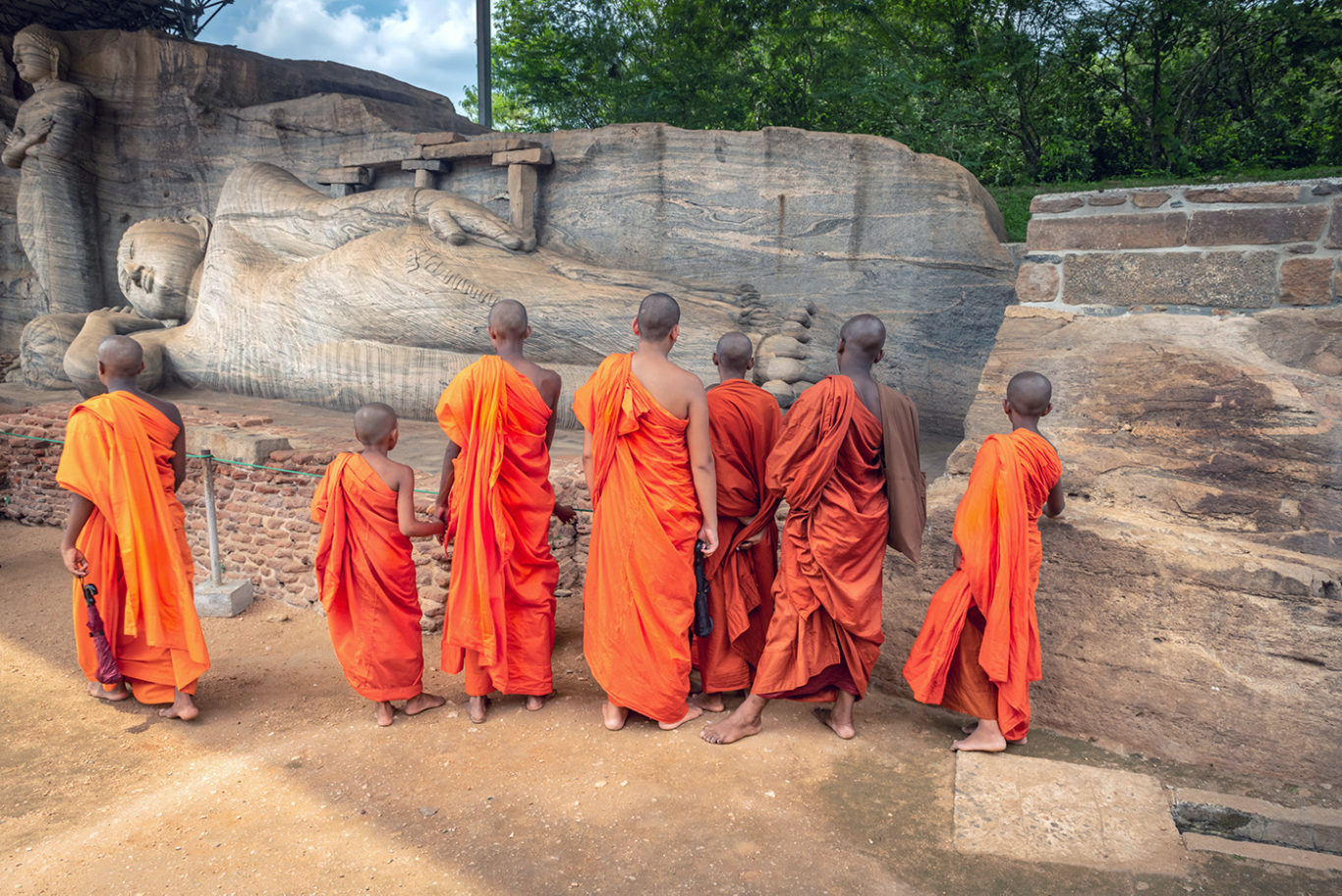Are there different types of Theravada Buddhism?

A small group of Theravada monks look at a Buddha statue in Sri Lanka, the birthplace of Theravada Buddhism. | Terry Mathews / Alamy Stock Photo
Theravada Buddhism, like all forms of Buddhism, has branched out into many lineages over the millennia since the Buddha’s death. The initial division that paved the way for the forerunner of today’s Theravada is believed to have taken place at the Second Buddhist Council, about seventy years after the Buddha’s death. According to various Theravadin accounts, a group of reformist monks thought their peers were too lax and proposed additional rules for the Vinaya, or monastic code of conduct, that were unacceptable to the majority. The sangha split into two major schools, the Sthaviravada (“School of the Elders”) for the reformers and the Mahasanghika (“Great Assembly”) for the rest.
Around the 3rd century BCE, under the patronage of the Indian emperor Ashoka, missionaries took Buddhism to Ceylon (now Sri Lanka) where it flourished and became the dominant religion. While we cannot know for certain what branch of Buddhism these pre-Theravada missionaries belonged to, they may have been part of another group, the Vibhajjavadins (“Those Who Analyze”)— also known as the Theriyas—who opposed the Sthaviravada school. Because Buddhism was later virtually wiped out in India by Mongol invasions and other social and political upheavals, the Theravada we know today is essentially descended from what took root in Sri Lanka. The Pali canon, in fact, which forms the basis of most Theravada practice and monasticism, was first written down in Sri Lanka, and the commentaries were developed there, too.
From Sri Lanka, Buddhists made their way to Southeast Asia, where the teachings were adopted in kingdoms that today form parts of Cambodia, Laos, Myanmar, and Thailand. Along the way, Theravada teachings mixed with tantric practices, animism, and other local spiritual systems.
For centuries, many forms of Theravada emphasized the practice of generosity and merit-making with the goal of a good rebirth over meditation and ethical conduct with the goal of enlightenment. But this began to change in the 19th century. In Thailand, for example, King Mongkut—the model for the king of Siam in the musical The King and I—was a former monk who promoted a Buddhism that adhered more strictly to the Vinaya and emphasized meditation and the quest for liberation. In the early 20th century, the meditation master Ajahn Mun Bhuridatta launched an even more ascetic school—Dhammayut, or the Thai Forest Tradition.
In Myanmar (formerly Burma), what we now know as the Vipassana, or Insight Meditation, school reintroduced meditation as a lay practice, partly in response to the work of Christian missionaries. This was part of a trend in the 19th and 20th centuries of anti-colonial efforts by Buddhists (such as the Sinhalese reformist Anagarika Dharmapala) seeking to wrest the religion from Western influence.
The Thai Forest and Vipassana traditions have been transplanted to the contemporary West, where they appeal to a large number of convert Buddhists. While the Thai Forest tradition is a monastic practice that clings to the Vinaya and depends on the generosity of lay supporters to sustain it, Vipassana is largely taught and practiced by lay people and is typically supported by a mix of donations, membership fees, and paid classes and retreats.

Tricycle is more than a magazine
Gain access to the best in sprititual film, our growing collection of e-books, and monthly talks, plus our 25-year archive
Subscribe now